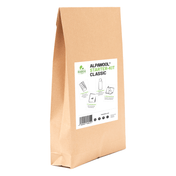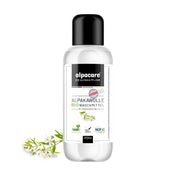Interesting facts about the mallow plant at a glance
Who doesn’t have at least one cotton item of clothing in their closet?
The mallow family, to which cotton (Gossypium) belongs, originally comes from South Africa, South America and India. They are mostly grown in the tropics and subtropics. They are used in the production of oil and seed cake, in the textile industry and as an ornamental plant. The plant, which can grow as a tree or shrub, has yellow, red or white flowers, grows between 25 cm and 3 meters high and reproduces by self-seeding.
The special thing about the cotton plant, however, is that the flowers develop into capsule fruits and contain 3 to 5 compartments with brown, poisonous seeds. When ripe, the inner white cotton oozes out of the bursting capsule. A cotton capsule contains around 30 seeds, and each seed has 2,000 - 7,000 seed hairs. The quality measurement of the fibers is the so-called staple length. This is generally between 28 and 42 mm.
Staple lengths divided into 4 categories:
– 1. Short stack: up to 26 mm and 2. Medium stack: 26 – 29 mm (together 90% market share)
– 3. Long staple: 30 – 38 mm (7-8% market share) – 4. Extremely long staple: from 39 mm (2-3% market share)
Peru, Egypt, Sudan and the USA supply the highest quality fibres. A single cotton fibre can be around 4 - 45 microns (microns = thousandths of a millimetre). The finest fibre is the Pima cotton fibre, from which Pima cotton is made. It has a thickness of less than 4 microns and belongs to the long staple category. The fibres that belong to the extremely long staple are the most valuable because their cross-section has the greatest strength, which is why they are significantly more expensive. A striking property of cotton is that its wet strength is 15% higher than its dry strength. The wool can be boiled and spun without causing any damage. But the main reason why cotton textiles are so skin-friendly is that they are very absorbent. Other arguments for buying cotton are its very low allergy potential, its durability and stretchability, its high tear resistance, its resistance to heat and the fact that it does not build up electrostatic charges.
Subscribe to our emails
Be the first to know about new collections and exclusive offers.




